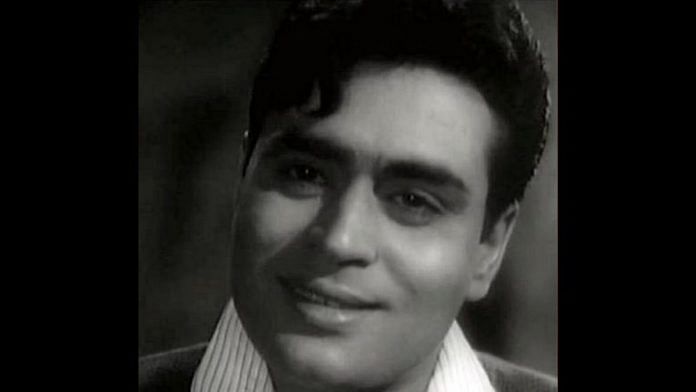It was half-past midnight when a young Rajendra Kumar stealthily crept back into his house after watching Heer Syal, a 1938 film starring Baby Noor Jehan. The lights were out, and he was convinced that his late-night escapade had gone unnoticed. As he settled under the covers of the bed, his grandfather’s voice rang from a distance: “I’ve been waiting for you.”
Chajuram Tuli, Kumar’s grandfather, yelled at his grandson who had run off to watch a film. “Instead of concentrating on your studies, you chant ‘cinema, cinema!’ day in and day out! I’m warning you right now: mend your ways or someday you will turn into cinema!”
His words would become a prophecy, writes Seema Sonik Alimchand in Jubilee Kumar: The Life and Times of a Superstar.
Kumar earned the nickname ‘Jubilee King’ or ‘Jubilee Kumar’ after giving six consecutive box office hits, all of which ran in theatres for more than 25 weeks.
However, the journey of this Padma-award-winning actor, who, as a producer, gave veterans Rajesh Khanna and Randhir Kapoor their earliest hits in The Train (1970) and Jawani Diwani (1972), began with immense struggle. From sleeping on footpaths to doing odd jobs for lyricist Rajinder Krishan, Kumar’s first days in Mumbai were fraught with hardships—a far cry from the dreamy and luxurious life he led before 1947.
Humble beginnings
Born in Sialkot in present-day Pakistan on 20 July 1927 to an affluent business family, Kumar’s love for films began at an early age. But acting did not feature in the life that was charted out for him—he was meant to take over his family business. However, that never happened.
In 1947, while Kumar was in his second year of college, Partition forced his family to flee Sialkot. Leaving behind their opulent ancestral home in Pakistan, Rajendra Kumar and his family moved to present-day India, living in shared accommodation in Delhi’s Subzi Mandi. But Kumar couldn’t make peace with his circumstances and moved to Mumbai to pursue his celluloid dreams in 1949.
Kumar, who starred in several 1960s silver jubilee hits like Dil Ek Mandir (1963), Ayee Milan Ki Bela (1964), Arzoo (1965) and Sangam (1964), began his career as an assistant director. Kumar was assisting filmmaker Harnam Singh Rawail when the latter offered him a cameo in Patanga (1949), along with his existing responsibilities. But it was only in 1950 that filmmaker Chandulal Shah offered him a role in Dilip Kumar and Nargis-starrer Jogan, as a supporting act. Kumar made the most of this opportunity.
However, as good as he was, Kumar only received discouragement from his professional acquaintances, with Rawail actively discouraging him from pursuing acting. “You did get a break, but acting is not for you… Concentrate on the job at hand,” he said, as per an excerpt from Seema Sonik Alimchand’s Jubilee Kumar: The Life and Times of a Superstar.
Also read: Dhool Ka Phool: Nehruvian secularism of Yash Chopra’s first movie is worth remembering today
Rise to glory
Kumar was determined to make it as an actor, and his persistence paid off. He landed a lead role in Vachan (1955), which became his first jubilee hit. Clearly, there was no looking back from here—Kumar went on to play a versatile range of roles, such as a shehnai player in Goonj Uthi Shehnai (1959), and a young poet in Arzoo (1965) among others.
Kumar’s most notable performance came with Sadhana in Mere Mehboob (1963), where he was praised for his portrayal of Anwar and capturing the essence of Lucknow’s Nawabi etiquette. Interestingly, this venture was HS Rawail’s, who never thought Kumar would make it as an actor.
Also read: An IAF pilot, a love triangle & Raj Kapoor: Why Sangam is a Bollywood hit even after 50 yrs
Generosity first
Kumar was also known for his generous and kind demeanour. He reportedly believed that his beautiful sea-facing house brought him luck. But the actor willingly sold it in 1969 to Rajesh Khanna, who also thought that the house would help him achieve the same legacy as that of ‘Jubilee Kumar’. Buying the house indeed worked to Khanna’s benefit—who went on to become one of Bollywood’s biggest stars.
It was not just Khanna that Kumar helped. In fact, he was known for his generosity to newcomers in Bollywood and helped megastars like Dharmendra and Feroze Khan in their early days.
But Bollywood could never repay that kindness—especially when Kumar’s career began to plateau in the 1970s. All he could manage were bit-part roles in Punjabi films, with offers drying up by the ’80s.
However, as broken and helpless as he felt, Kumar never gave in to negativity and chose to count his blessings. “Perhaps I should call it a day. I am at peace,” he once told his family. Instead, he focused his energies on building a successful film career for his son, actor Kumar Gaurav, and kept appearing in films till 1998, before passing away from cardiac arrest in his sleep, in 1999.
(Edited by Zoya Bhatt)



